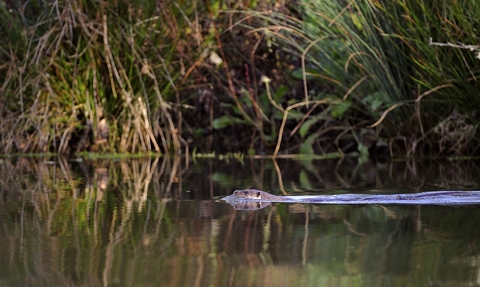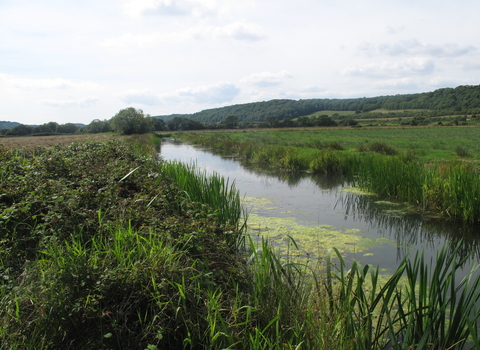
Andy Rouse/2020VISION
Wilder Waterways
Enhancing the Land Yeo River
The Land Yeo is a 20km long river within North Somerset that feeds into Tickenham, Nailsea, Kenn Moor and the Severn Estuary which are all Sites of Special Scientific Interest. The Land Yeo river is particularly significant as it sits within the North Somerset Levels and Moors (NSLM), a hugely important coastal wetland habitat, including 1160 hectares of peatland.
Crossed by a series of rivers, the NSLM area is drained by an elaborate and extensive network of waterways and ditches. The heavily modified Land Yeo river flows through this area, with the source being in the Dundry Hills. It then flows into Barrow tanks - a Bristol Water drinking water reservoir. From here, it follows a relatively straight course skirting Flax Bourton, flowing through Nailsea and Clevedon and ending up in the Bristol Channel. This wide-spanning course means that the Land Yeo river influences the biodiversity of a large area of North Somerset. That's why we're working with Bristol Avon Rivers Trust (BART) to increase the natural capital of this river to create a wilder waterway.
Our plan of action
Protecting and restoring habitats
Together with BART, we will build the story of the Land Yeo. During the winter of 2020, BART delivered a series of surveys to understand and identify the pressures facing the river and to produce a story map. This work is to identify key opportunities for habitat creation and enhancement and water quality improvements. We will use the evidence from these surveys and from speaking to local landowners, to develop opportunities for greater biodiversity throughout this important landscape.
Some surveys have already highlighted opportunities for Natural Flood Management (NFM) such as tree planting, floodplain reconnection and wetland creation. Others have shown there are habitat quality issues that could be impacting local ecology such as artificial barriers like weirs and culverts and a lack of vegetation and tree cover limiting the amount of shading and refuge needed by certain species that call the river home throughout sections of the watercourse. Now that we know about these opportunities and issues, we can start working towards creating solutions to improve them.
Working with the local community
As well as this, we will engage the community of local landowners and river users through citizen science campaigns, walks, talks and farm advice focused on water quality monitoring, habitat restoration, sustainable management and species recording. We will also be supporting the local community throughout and following the coronavirus pandemic with Wellbeing with Nature sessions, to help them feel the benefits of nature both mentally and physically. BART will lead an annual water blitz for the Land Yeo and NSLM to engage local community groups. This citizen science project will be used to identify areas for further investigation of water quality issues, depending on the results gathered by local people.




